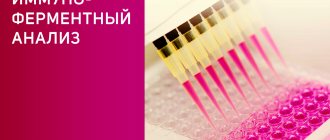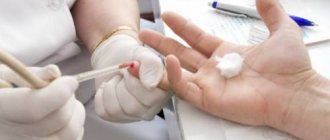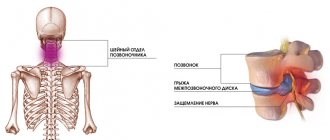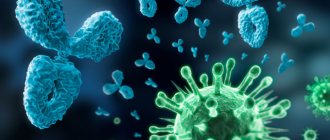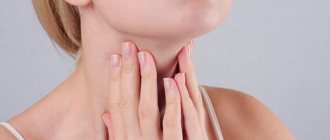- Medicines
- Saline solution
- Essential oils
- Not recommended for use
It is believed that inhalations are more effective than syrups and tablets. During the procedure, the medicinal solution is converted into an aerosol or steam - so the drug directly affects the source of inflammation.
Today we will look at what medicinal and non-medicinal solutions can be used in inhalers.
Use of inhalations
- For the prevention of respiratory diseases and moisturizing the mucous membrane of the respiratory tract.
- Treatment of bronchial asthma, chronic bronchitis, cystic fibrosis, COPD.
- In the complex treatment of rhinitis, sinusitis, pharyngitis, tracheitis, bronchitis.
- For children and the elderly.
- For patients with severe illnesses.
Causes and treatment of cough
Benefits of inhalation
- Direct delivery of the drug to the area of inflammation.
- Pure substance without impurities.
- Possibility to introduce any amount of dosed substance.
- Fast, instant action of the drug.
- Fewer side effects, since the drug does not enter the blood.
- Permitted for use in infancy, in postoperative conditions, and in coma.
- Maximum efficiency at the lowest cost.
Contraindications
Inhalations are not recommended for:
- elevated body temperature;
- cardiovascular failure;
- nosebleeds;
- emphysema;
- oncological diseases.
How to fill a nebulizer with saline solution
A universal remedy used for various diseases of the respiratory system. Beneficial properties of sodium chloride:
- moisturizes the mucous membrane;
- stimulates normal mucus formation;
- improves breathing;
- facilitates expectoration of sputum;
- destroys pathogens;
- helps relieve the inflammatory process;
- enhances the properties of administered drugs.
How to fill an inhaler with saline solution:
- prepare the apparatus;
- draw 4 ml of saline solution with a syringe;
- pour into the camera of the device;
- turn on the device;
- breathe for 10-20 minutes.
Saline solution for inhalation is sold in dosed containers. However, you can buy a 200 ml bottle. In this case, do not open the bottle completely, but draw the product with a syringe and needle. Puncture the rubber stopper and take out the required amount of the drug. After inhalation, the remaining product is poured out. Each procedure requires a new portion. The solution should be stored in a cool place for no longer than 1 month.
Types of inhalers
The inhalation therapy method is based on the penetration of medicinal substances into the respiratory tract in the form of an aerosol, that is, tiny particles suspended in a gaseous medium. If aerosol is inhaled:
- particles larger than 5 microns settle in the oral cavity and upper respiratory tract;
- particles from 1 to 5 microns settle in the lower respiratory tract;
- particles with a diameter less than 1 micron are exhaled back.
Inhalers are divided into types depending on the mechanism of particle formation.
Ultrasonic nebulizers
In ultrasonic inhalers, the drug is atomized due to high-frequency vibration of piezoelectric crystals.
Research shows that ultrasonic inhalations are effective due to the spraying of not only the medicinal substance itself, but also negatively charged particles, which have an additional anti-inflammatory effect.
However, this type of inhaler has a drawback: exposure to ultrasound destroys many medications (for example, antibiotics and phlegm thinners).
Compressor inhalers
A compressor inhaler converts the drug into a fine aerosol using compressed air from a compressor.
The compressor inhaler is considered the most effective for affecting all parts of the respiratory tract. Its great advantage is the creation of an aerosol suspension with a very small particle size of the drug substance. You can use any medications that are intended for inhalation.
Steam inhalers
Based on the evaporation of medicinal substances under the influence of high temperatures.
Flaws:
- you can get a burn to the mucous membrane;
- affect only the upper respiratory tract;
- at high heating temperatures they reduce the biological activity of medicinal substances.
In medical practice, two types of inhalers are usually used: compressor and ultrasonic.
Medicines
Prescribed individually at a doctor's appointment. As well as other details of treatment - how often to inhale and how much of the drug to pour into the inhaler.
Pulmonologists identify 5 groups of drugs that can be used for inhalation.
- Bronchodilators - relieve bronchospasm and are used in the treatment of bronchial asthma, chronic obstructive pulmonary disease and some other diseases. For example: salbutamol, fenoterol, berodual.
- Non-steroidal anti-inflammatory drugs - reduce pain, fever and inflammation. For example: pulmicort and cromohexal.
- Antibiotics - used to treat bacterial infections. For example: fluimicil.
- Corticosteroids are steroidal anti-inflammatory drugs. For example: hemisuccinate, prednisolone, dexamethasone.
- Mucolytics - thin mucus and facilitate its removal from the lungs. For example: fluimucil, lazolvan, ambroxol, ambrohexal, pulmozyme, acetylcysteine.
Not many medications can be used with steam inhalers and ultrasonic nebulizers: for example, antibiotics and hormonal drugs are destroyed when heated.
If you need a universal option, and you know exactly what to put in your inhaler when you cough, choose compressor and mesh nebulizers - you can use any medications with them.
How to perform inhalations
- Inhalation is carried out no earlier than 1-1.5 hours after a meal or after physical activity.
- Smoking before and after inhalation is prohibited.
- It is advisable to gargle with plain water before inhalation.
- For diseases of the nose and nasopharynx, inhalation and exhalation are done through the nose using nasal cannulas.
- For diseases of the lower respiratory tract (bronchi, trachea), you need to use a special mouthpiece. During the procedure, you need to take a deep breath, hold your breath for a couple of seconds, and then exhale through your nose.
Nebulizer therapy
Patient's Guide. You can learn about what a nebulizer is, what diseases can be treated with its help, how to carry out inhalation correctly, how to choose a nebulizer, and much more about the modern method of inhalation therapy from this article.
Nebulizer therapy is modern and safe.
In the treatment of respiratory diseases, the most effective and modern method is inhalation therapy. Inhalation of medications through a nebulizer is one of the most reliable and simplest treatment methods. The use of nebulizers in the treatment of respiratory diseases is gaining increasing recognition among doctors and patients.
To make the medicine easier to penetrate into the respiratory tract, it should be converted into an aerosol. A nebulizer is a chamber in which a medicinal solution is sprayed into an aerosol and delivered into the patient’s respiratory tract. The healing aerosol is created due to certain forces. Such forces can be air flow (compressor nebulizers) or ultrasonic vibrations of the membrane (ultrasonic nebulizers).
The modern approach to the treatment of respiratory diseases involves delivering drugs directly to the respiratory tract through the widespread use of inhaled forms of drugs. The capabilities of the nebulizer have dramatically expanded the scope of inhalation therapy. Now it has become available to patients of all ages (from infancy to old age). It can be performed during periods of exacerbation of chronic diseases (primarily bronchial asthma), in situations where the patient has a significantly reduced inhalation rate (young children, postoperative patients, patients with severe somatic diseases) both at home and in a hospital setting.
Nebulizer therapy has advantages over other types of inhalation therapy:
- It can be used at any age, since the patient is not required to adjust his breathing to the operation of the device and at the same time perform any actions, for example, pressing the canister, holding the inhaler, etc., which is especially important in young children.
- The absence of the need to take a strong breath allows the use of nebulizer therapy in cases of severe attacks of bronchial asthma, as well as in elderly patients.
- Nebulizer therapy allows the use of drugs in effective doses without side effects.
- This therapy provides a continuous and rapid supply of medication using a compressor.
- It is the safest method of inhalation therapy, since it does not use, unlike metered-dose aerosol inhalers, propellants (solvents or carrier gases).
- This is a modern and comfortable method of treating bronchopulmonary diseases in children and adults.
What diseases can be treated with a nebulizer?
The drug sprayed by an inhaler begins to act almost immediately, which makes it possible to use nebulizers, first of all, for the treatment of diseases that require immediate intervention - asthma, allergies.
(primarily, nebulizers are used to treat diseases that require immediate intervention - asthma, allergies).
Another group of diseases for which inhalations are simply necessary are chronic inflammatory processes of the respiratory tract, such as chronic rhinitis, chronic bronchitis, bronchial asthma, chronic broncho-obstructive pulmonary disease, cystic fibrosis, etc.
But their scope of application is not limited to this. They are good for the treatment of acute respiratory diseases, laryngitis, rhinitis, pharyngitis, fungal infections of the upper respiratory tract, and the immune system.
Inhalers help with occupational diseases of singers, teachers, miners, and chemists.
In what cases is a nebulizer needed at home:
- In a family where there is a child who is susceptible to frequent colds, bronchitis (including those occurring with broncho-obstructive syndrome), for the complex treatment of cough with difficult to separate sputum, treatment of stenosis.
- Families with patients with chronic or often recurrent bronchopulmonary diseases (bronchial asthma, chronic obstructive pulmonary disease, chronic bronchitis, cystic fibrosis).
What medications can be used in a nebulizer.
For nebulizer therapy, there are special solutions of drugs that are produced in bottles or plastic containers - nebulas. The volume of the medicine together with the solvent for one inhalation is 2-5 ml. Calculation of the required amount of medication depends on the age of the patient. First, 2 ml of saline solution is poured into the nebulizer, then the required number of drops of medicine is added. Distilled water should not be used as a solvent, as it can provoke bronchospasm, which will lead to coughing and difficulty breathing during the procedure. Pharmacy packaging with medications is stored in the refrigerator (unless otherwise indicated) closed. After the pharmaceutical package has been opened, the drug must be used within two weeks. It is advisable to write down the date on which you started using the drug on the bottle. Before use, the medicine must be warmed to room temperature.
For nebulizer therapy the following can be used:
- mucolytics and mucoregulators (drugs for thinning sputum and improving expectoration): Ambrohexal, Lazolvan, Ambrobene, Fluimucil;
- bronchodilators (drugs that dilate the bronchi): Berodual, Ventolin, Berotek, Salamol.
- glucocorticoids (hormonal drugs with multilateral effects, primarily anti-inflammatory and anti-edematous): Pulmicort (suspension for nebulizers);
- cromones (antiallergic drugs, mast cell membrane stabilizers): Cromohexal Nebula;
- antibiotics: Fluimucil antibiotic;
- alkaline and saline solutions: 0.9% saline solution, Borjomi mineral water
Your attending physician should prescribe the drug and tell you about the rules for its use. He must also monitor the effectiveness of treatment.
Not recommended for use with nebulizers:
All solutions containing oils, suspensions and solutions containing suspended particles, including decoctions and infusions of herbs, as well as solutions of aminophylline, papaverine, platyphylline, diphenhydramine and the like, as not having points of application on the mucous membrane of the respiratory tract.
What side effects are possible with nebulizer therapy?
When breathing deeply, symptoms of hyperventilation (dizziness, nausea, cough) may appear. It is necessary to stop inhalation, breathe through your nose and calm down. After the symptoms of hyperventilation disappear, inhalation through a nebulizer can be continued.
During inhalation, as a reaction to the administration of the sprayed solution, coughing may occur. In this case, it is also recommended to stop inhalation for a few minutes.
Inhalation technique using a nebulizer
- Before handling your inhaler, you should (always) carefully
- wash your hands with soap, because... there may be pathogenic microbes on the skin.
- Assemble all parts of the nebulizer according to the instructions
- Pour the required amount of medicinal substance into the nebulizer cup, preheating it to room temperature.
- Close the nebulizer and attach the face mask, mouthpiece or nasal cannula.
- Connect the nebulizer and compressor using a hose.
- Turn on the compressor and inhale for 7-10 minutes or until the solution is completely consumed.
- Turn off the compressor, disconnect the nebulizer and disassemble it.
- Wash all parts of the nebulizer with hot water or 15% baking soda solution. Brushes and squeegees should not be used.
- Sterilize the disassembled nebulizer in a steam sterilization device, such as a thermal disinfector (steam sterilizer) designed for treating baby bottles. Sterilization by boiling for at least 10 minutes is also possible. Disinfection must be carried out once a week.
- The thoroughly cleaned and dried nebulizer should be stored in a clean napkin or towel.
Basic rules for inhalation
- Inhalations are carried out no earlier than 1-1.5 hours after eating or significant physical activity.
- During the course of inhalation treatment, doctors prohibit smoking. In exceptional cases, before and after inhalation, it is recommended to stop smoking for an hour.
- Inhalations should be taken in a calm state, without being distracted by reading or talking.
- Clothing should not restrict the neck or make breathing difficult.
- For diseases of the nasal tract, inhalation and exhalation must be done through the nose (nasal inhalation), breathing calmly, without tension.
- For diseases of the larynx, trachea, bronchi, and lungs, it is recommended to inhale the aerosol through the mouth (oral inhalation), breathing deeply and evenly. After taking a deep breath through your mouth, you should hold your breath for 2 seconds, and then exhale completely through your nose; in this case, the aerosol from the oral cavity enters further into the pharynx, larynx and further into the deeper parts of the respiratory tract.
- Frequent deep breathing can cause dizziness, so periodically it is necessary to interrupt inhalation for a short time.
- Before the procedure, you do not need to take expectorants or rinse your mouth with antiseptic solutions (potassium permanganate, hydrogen peroxide, boric acid).
- After any inhalation, and especially after inhalation of a hormonal drug, it is necessary to rinse your mouth with boiled water at room temperature (a small child can be given drink and food); if using a mask, rinse your eyes and face with water.
- The duration of one inhalation should not exceed 7-10 minutes. Course of treatment with aerosol inhalations - from 6-8 to 15 procedures
What types of nebulizers are there?
Currently, three main types of inhalers are used in medical practice: steam, ultrasonic and compressor.
The action of steam inhalers is based on the effect of evaporation of the medicinal substance. It is clear that only volatile solutions (essential oils) can be used in them. The biggest disadvantage of steam inhalers is the low concentration of the inhaled substance, usually less than the threshold for therapeutic effects, as well as the inability to accurately dose the drug at home.
Ultrasonic and compressor are combined by the term “nebulizers” (from the Latin word “nebula” - fog, cloud); they generate not vapor, but an aerosol cloud consisting of microparticles of the inhaled solution. A nebulizer allows you to administer pure medications to all respiratory organs (nose, bronchi, lungs), without any impurities. The dispersion of aerosols produced by most nebulizers ranges from 0.5 to 10 microns. Particles with a diameter of 8-10 microns settle in the oral cavity and trachea, with a diameter from 5 to 8 microns - in the trachea and upper respiratory tract, from 3 to 5 microns - in the lower respiratory tract, from 1 to 3 microns - in bronchioles, from 0. 5 to 2 microns – in the alveoli. Particles smaller than 5 microns are called the “respirable fraction” and have the maximum therapeutic effect.
Ultrasonic nebulizers spray the solution with high-frequency (ultrasonic) vibrations of the membrane. They are compact, silent, and do not require replacement of nebulization chambers. The percentage of aerosol that reaches the mucous membrane of the respiratory tract exceeds 90%, and the average size of aerosol particles is 4-5 microns. Thanks to this, the required drug in the form of an aerosol in high concentration reaches the small bronchi and bronchioles.
The choice of ultrasonic nebulizers is more preferable in cases where the area of action of the drug is small bronchi, and the drug is in the form of a saline solution. However, a number of drugs, such as antibiotics, hormonal drugs, mucolytics (thinning sputum), can be destroyed under the influence of ultrasound. These drugs are not recommended for use in ultrasonic nebulizers.
Compressor nebulizers form an aerosol cloud by forcing a powerful air stream pumped by a compressor through a narrow opening in a chamber containing a medicinal solution. The principle of using compressed air in compressor nebulizers is the “gold standard” of inhalation therapy. The main advantage of compressor nebulizers is their versatility and relative cheapness, they are more accessible and can spray almost any solution intended for inhalation.
Compressor nebulizers have several types of chambers:
- convection chambers with constant aerosol output;
- breath-activated cameras;
- breath-activated chambers with flow interrupter valve.
When inhaling medicinal substances through a nebulizer, it is necessary to take into account some features:
- the optimal filling volume of the nebulizer chamber is at least 5 ml;
- to reduce the loss of the drug at the end of inhalation, you can add 1 ml of saline solution to the chamber, after which, shaking the nebulizer chamber, continue inhalation;
- When using inexpensive and accessible drugs, all types of nebulizers can be used, but when using more expensive drugs, the greatest effectiveness of inhalation therapy is provided by nebulizers activated by the patient's inspiration and equipped with a flow interrupter valve during the exhalation phase. These devices are especially effective in the treatment of bronchopulmonary diseases.
How to choose a nebulizer?
When treated with a nebulizer, the medicine is delivered to the respiratory tract. This particular treatment is intended for those whose disease has affected the respiratory tract (rhinitis, laryngitis, tracheitis, bronchitis, bronchial asthma, chronic obstructive pulmonary disease, etc.). In addition, sometimes the mucous membrane of the respiratory tract is used to introduce drugs into the human body. The surface of the bronchial tree is very large, and many drugs, such as insulin, are actively absorbed through it.
The choice of inhaler depends on the disease you are going to treat and your financial capabilities.
In Russia, nebulizer manufacturers from Germany, Japan, and Italy represent their products on the medical equipment market. Unfortunately, there are no domestic manufacturers of compressor nebulizers yet. Detailed information about the technical characteristics of certain types of nebulizers can be obtained from Russian companies that sell them. When choosing a nebulizer, the requirements for the nebulizer and compressor are taken into account. For a compressor, the important factors are size, weight, operating noise, and ease of use. In all these parameters they differ slightly. But it should be noted that nebulizers from PARI GmbH (Germany) are distinguished by traditionally high German quality, exceptional efficiency and long service life. They ensure maximum deposition of medications in the respiratory tract due to optimal aerosol dispersion.
Perhaps the main attention should be paid to the type of sprayer . Nebulizers equipped with a direct-flow nebulizer make sense to use in young children, since they do not have enough inspiratory force to activate the valves (and thus save medicine). For inhalation, children under 3 years of age should use a children's mask. Adults can also use this type of sprayer, because... It is initially equipped with a mouthpiece.
Breath-activated nebulizers have inhalation and exhalation valves that are activated alternately throughout the act of breathing. When using them, less aerosol is formed on exhalation, resulting in significant savings in medication.
There are also nebulizers that have a nebulizer equipped with a tee tube (aerosol flow interrupter), which allows you to regulate the formation of aerosol only during inhalation by blocking the side opening of the tee.
Various types of attachments are used with the nebulizer: mouthpieces, nasal cannulas (tubes), masks in adult and child sizes.
- Mouthpieces (adults and children) are optimal for delivering medications deep into the lungs; they are used for inhalation by adult patients, as well as children over 5 years old.
- Masks are convenient for treating the upper respiratory tract and allow you to irrigate all parts of the nasal cavity, pharynx, as well as the larynx and trachea. When using a mask, most of the aerosols settle in the upper respiratory tract. Masks are needed when using nebulizer therapy in children under 3 years of age, since it is impossible to carry out inhalations in such patients through a mouthpiece - children breathe mainly through the nose (this is due to the anatomy of the child’s body). It is necessary to use a mask of the appropriate size. Using a tight-fitting mask reduces aerosol loss in young children. If the child is over 5 years old, it is better to use a mouthpiece rather than a mask.
- Nasal cannulas (tubes) are needed to deliver a medicinal aerosol into the nasal cavity. They can be used in the complex treatment of acute and chronic rhinitis and rhinosinusitis
Buying a nebulizer for yourself and your loved ones is the right and reasonable decision. You have acquired a reliable assistant and friend
Author of the article:
Kartashova N.K., Ph.D., allergist of the highest category.
Inhalations with bromhexine
What does bromhexine help with?
Bromhexine is a mucolytic and expectorant drug. The drug is used for bronchitis, pneumonia, laryngitis, pharyngitis, tuberculosis, bronchial asthma. It can be used for both dry and wet coughs. It is advisable to start taking bromhexine in the early stages of the disease to get the best effect.
Cough preparations by group
Is it possible to do inhalations with bromhexine?
According to the instructions, bromhexine is taken orally, and there is no official information that it should be used for inhalation, but sometimes it is used by inhalation at home.
The closest analogue of bromhexine, ambroxol (Ambrobene, Lazolvan, etc.), is sold specifically in the form of a solution for inhalation. In any case, before using this or that drug, be sure to consult a specialist.
Which bromhexine is suitable for inhalation?
As an example, let’s take the form: bromhexine drops 8 mg/ml. Before inhalation, it must be diluted with distilled water in a 1:1 ratio.
If you take another solution of bromhexine, where the dose of the drug is 4 mg per 5 ml, then the total volume for an adult will be 20 ml. Whereas the inhaler chamber usually has a maximum capacity of 5 ml.
Bromhexine solution for inhalation
Dosage for preparing the solution:
- adults: 8 mg, which corresponds to 1 ml of bromhexine drops;
- children over 10 years old: 4 mg;
- children from 6 to 10 years old, 2 mg;
- children under 6 years of age in a dose of up to 2 mg;
- Toddlers should not use this form due to the high concentrations of substances it contains.
Inhalation is carried out twice a day. Course of treatment: 5 days.
How to prepare the solution
Dilute the drug with distilled water (water for injection) in a 1:1 ratio. Then the prepared solution is heated to a temperature of 36-38 degrees, but no more and no less, because high and low temperatures of the solution negatively affect the inflammatory process. At a temperature of 25-28 degrees it is an irritant for the bronchi due to the cold factor. And if the solution is 39-40 degrees, then it has a detrimental effect on the components of the medicine: such a temperature destroys the medicine.
How to refill an inhaler (nebulizer)
The main indication for inhalation therapy is airway obstruction. In most cases, it develops with inflammation of the lower respiratory organs. The device delivers medicine to pathological places. The medication begins to act within a few minutes. The healing process begins from the first days of therapy.
How to refill the nebulizer and what products to use depends on the clinical picture and symptoms of the disease. In any case, drugs with pronounced therapeutic properties are prescribed.
The following must not be poured into the device chamber:
- homemade medicines;
- decoctions based on medicinal herbs;
- saline solutions;
- essential oils;
- alcohol tinctures.
Use only medications intended for inhalation treatment. Saline solution is used as a solvent. It is prohibited to dilute medications with boiled, spring, distilled, or mineral water.
For diseases of the upper respiratory tract, a steam device is used to prevent colds. Warm steam dilates blood vessels, relieves swelling, stimulates the removal of mucus, and eliminates congestion. If the question arises of how to refill the steam inhaler, you can use all the means listed above. They prepare decoctions of medicinal herbs, tinctures, saline solutions, and drop essential oils.
How to refill an inhaler when a child coughs
Young children often get sick due to weak immunity. Almost every cold ends in bronchitis, tracheitis, pneumonia. Nebulizer therapy helps cope with the disease and reduces the likelihood of developing side effects from medications. The dosage of drugs is selected individually. Depends on the clinical picture and age.
What to breathe for your child:
| Moist cough | Bronchitis with obstruction | Laryngotracheitis with frequent, severe attacks | Dry cough |
| Saline solution | |||
| Lazolvan, Ambroxol, Mukolvan | |||
| Ventolin, Salgim, Berotek | |||
| Pulmicort, Budesonide, Cromohexal | |||
| Fluimicil-Antibiotic | |||
Before starting treatment, you should consult your pediatrician. You are allowed to use saline solution yourself. If the cough is well expectorated, breathing is not difficult, nebulizer therapy is not prescribed.
How to assemble a nebulizer chamber
Often, users of nebulizers have difficulties with the device - it can be difficult to assemble the chamber into which the medicine is poured. Let's look step by step at how to do this correctly, using the OMRON Comp Air NE-C24 inhaler as an example.
When you first open the nebulizer box, the chamber may be either assembled or disassembled. Let's consider the option when it is disassembled and show how to assemble it.
The nebulizer chamber consists of 4 elements.
- Reservoir for medicines.
- Bumper.
- Nebulizer chamber cover.
- Stub.
For the nebulizer to work correctly, it is necessary to place the bumper inside the tank - without it, the medicine will not turn into an aerosol, and inhalation will not make sense.
Once you have installed the baffle, pour the medicine into the reservoir, close the cap, and connect the air tube.
The reservoir is assembled. All that remains is to choose a suitable nozzle for inhalation: a mouthpiece, a mask for an adult or a child.
In OMRON inhalers, the bumper is placed on the cone-shaped element of the reservoir (nozzle).
Reviews
Veronica: “The child has a cold. My nose was very stuffy. The discharge was clear. Vasoconstrictor drops did not help at all. There was no cough. In the evening I decided to give Pulmicort to ease my breathing and relieve swelling. At first it became better, the next morning there was heavy breathing, whistling, and coughing sometimes. We went to the doctor - bronchitis. I prescribed to breathe Mukolvan, Lorde. After two days it became easier. I have two conclusions: you shouldn’t self-medicate; inhalations can make things worse. I am sure that it was from the nebulizer that the infection descended into the bronchi.”
Carolina: “My son had laryngotracheitis. In the evening I coughed so much that I could not calm down. We breathed Ventolin and Pulmicort. No sense. I let my legs soar and lit a lamp with essential oils. It got better in 5 minutes. My point is that compressor devices help where they are used correctly.”
Nadezhda: “I got over it, but a week later I feel my throat starting to hurt again. There is a compressor in the house, but I haven’t used it myself. I decided to breathe in Dekasan. They say it kills bacteria and viruses. First, I inhaled the medicine through a mask through my nose. Then she inserted the mouthpiece into her mouth. The whole procedure lasted about 40 minutes. In the morning, my throat no longer hurt. Maybe it’s a coincidence, but I think the procedure helped.”



